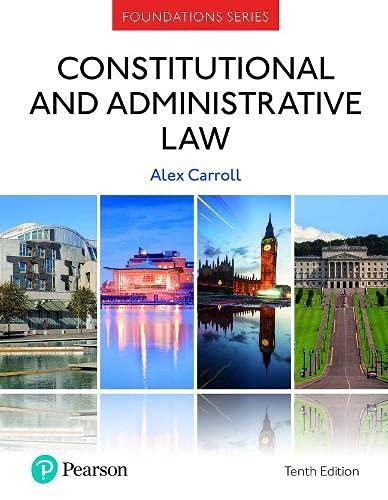Question
Selle composed his song, Let It End, in one day in the fall of 1975 and obtained a copyright for it on November 17, 1975.
Selle composed his song, "Let It End," in one day in the fall of 1975 and obtained a copyright for it on November 17, 1975. He played his song with his small band two or three times in the Chicago area and sent a tape and lead sheet of the music to eleven music recording and publishing companies. Eight of the companies returned the materials to Selle; three did not respond. This was the extent of the public dissemination of Selle's song. Selle first became aware of the Bee Gees' song, "How Deep Is Your Love," in May 1978 and thought that he recognized the music as his own, although the lyrics were different. He also saw the movie, "Saturday Night Fever," the sound track of which features the song "How Deep Is Your Love," and again recognized the music. He subsequently sued the three Gibb brothers; Paramount Pictures Corporation, which made and distributed the movie; and Phonodisc, Inc., now known as Polygram Distribution, Inc., which made and distributed the cassette tape of "How Deep Is Your Love."
The Bee Gees are internationally known performers and creators of popular music. They composed more than 160 songs; their sheet music, records and tapes have been distributed worldwide, some of the albums selling more than 30 million copies. The Bee Gees, however, did not themselves read or write music. In composing a song, their practice was to tape a tune, which members of their staff would later transcribe and reduce to a form suitable for registering, sale and performance by both the Bee Gees and others.
In addition to their own testimony at trial, the Bee Gees presented testimony by their manager, Dick Ashby, and two musicians, Albhy Galuten and Blue Weaver, who were on the Bee Gees' staff at the time "How Deep Is Your Love" was composed. These witnesses described in detail how, in January 1977, the Bee Gees and several members of their staff went to a recording studio in the Chateau d'Herouville about 25 miles northwest of Paris. There the group composed at least six new songs and mixed a live album. Barry Gibb's testimony included a detailed explanation of a work tape which was introduced into evidence and played in court. This tape preserves the actual process of creation during which the brothers, and particularly Barry, created the tune of the accused song while Weaver, a keyboard player, played the tune which was hummed or sung by the brothers. Although the tape does not seem to preserve the very beginning of the process of creation, it does depict the process by which ideas, notes, lyrics and bits of the tune were gradually put together.
Following completion of this work tape, a demo tape was made. The work tape, demo tape and a vocal- piano version taken from the demo tape are all in the key of E flat. Lead sheet music, dated March 6, 1977, is in the key of E. On March 7, 1977, a lead sheet of "How Deep Is Your Love" was filed for issuance of a United States copyright, and in November 1977, a piano-vocal arrangement was filed in the Copyright Office.
To constitute an infringement under the Act there must be substantial similarity between the infringing work and the work copyrighted; and that similarity must have been caused by the defendant's having copied the copyright holder's creation. The protection is thus against copying -- not against any possible infringement caused when an independently created work coincidentally duplicates copyrighted material. Sheldon v. Metro-Goldwyn Pictures Corp., 81 F.2d 49, 54 (2d Cir. 1936). "Since direct evidence of copying is rarely available, copying may be established by proof of access and substantial similarity." NIMMER 141.2 at 613.
So here is the question part: Put yourself in the shoes of Mr. Selle. You think that you can win this case because a) you sent your demo to the Bee Gees record label, b) the demo was one of the ones not returned, and c) the Bee Gees have made a bunch of money. So you sue them for infringement.
Review the facts and the definitions given to you about infringement, then a) state which facts Selle show to prove the case, b) list the facts that you can find that support Mr. Selle's case and c) list those that do not support his case. Do you agree with Mr. Selle that he should win his case? Tell me your reasoning and which facts support your answer. For those able to read music, partial scores for both songs here are the songs. For those who don't see the infringement project site for audio sample: http://mcir.usc.edu/cases/1980-1989/Pages/sellegibb.html
or : https://youtu.be/XpqqjU7u5Yc
and Ronald Selle song : https://youtu.be/CDsaT9xj4A0
The court in real life ruled against Mr. Selle. Do you agree with the court's decision? Explain.
Step by Step Solution
There are 3 Steps involved in it
Step: 1

Get Instant Access to Expert-Tailored Solutions
See step-by-step solutions with expert insights and AI powered tools for academic success
Step: 2

Step: 3

Ace Your Homework with AI
Get the answers you need in no time with our AI-driven, step-by-step assistance
Get Started


